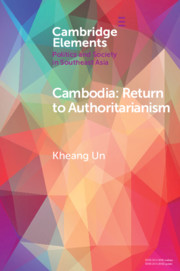Element contents
Cambodia
Published online by Cambridge University Press: 01 February 2019
Summary
- Type
- Element
- Information
- Online ISBN: 9781108558648Publisher: Cambridge University PressPrint publication: 07 February 2019
References
Primary Sources
Secondary Sources
- 54
- Cited by

